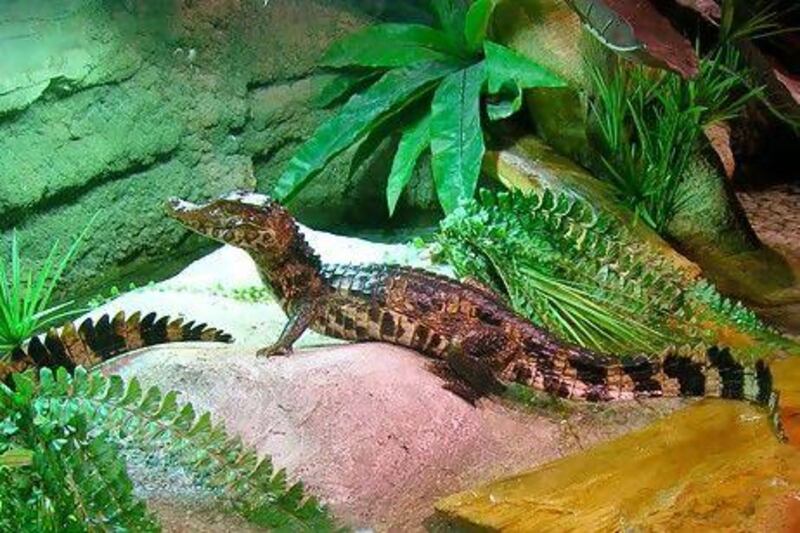DUBAI // As little Wurood stared wide-eyed through the acrylic glass, the crocodile on the other side stared right back at her.
Wurood, 6, did not wince. She was among dozens of visitors intrigued by the live reptiles at the Dubai Aquarium and Underwater Zoo yesterday.
The display was part of a campaign to educate visitors about the important role the species play in conserving the ecosystem.
"Crocodiles are usually perceived as dangerous predators," said Gordon White, the aquarium's general manager. "We wanted to shed some light on their positive elements and how they interact with the environment."
Two species of crocodilia, the Cuvier's dwarf caiman, which comes from the northern parts of South Africa, and the West African dwarf crocodile, are on display in a setting similar to their natural habitats.
Mr White said the two species were selected because of their size - 1.3 metres and 1.7 metres respectively - and even tempers.
"They don't get too big, are reasonably docile species and are relatively easy to handle compared to other crocodilia," he said.
"The saltwater crocodile from northern Australia, for example, can grow up to seven metres in length and are pretty angry creatures.
"The two species we chose are good representatives of crocodilia and are well suited for a mall environment."
Visitors learned some interesting facts, such as where the term "crocodile tears" originated - its ability to excrete salt from its eyes.
They were told the difference between crocodiles and alligators - it's mainly to do with their teeth -and that during the Jurassic period, some crocodiles grew nearly 15 metres long and preyed on dinosaurs.
The name crocodilian refers to all species of alligators, crocodiles, caimans and gharial.
Of the 23 species, 12 are threatened with extinction. Habitat loss and hunting for meat and skin used in shoes, wallets and bags have led to their decline.
On average, a hatchling has a survival rate of between 2 and 3 per cent. There are about 100,000 crocodilians remaining around the world.
Part of the aquarium's campaign is to deter people from buying products made of crocodile hide, thus reducing demand, Mr White said.
Among the many important roles crocodilia play in preserving the ecosystem is their essential place in the food pyramid.
"They are an important source of food for other animals," Mr White said. "There is a natural food pyramid; different parts of the food chain are all interlinked. If there's a gap, the whole chain can fall apart."
Another critical role is the upkeep of rivers and lakes.
"They clean up the waterways because they feed on animal carcasses," Mr White said. "Without them, the waterways would get blocked and the smooth flow of water would be disrupted."
Khalid Ali Ahmad, a father of three from Saudi Arabia, was visiting the zoo as part of a trip to Dubai. Mr Ahmad, a diver, said he was impressed with the crocodilia campaign and the number of species displayed at the zoo.
"You can never stop learning about these things. It's limitless," he said. "I'm a diver but there are so many underwater creatures here that I've never seen."
Mr Ahmad's children, Waleed, Ward and Wurood, were clearly impressed by the display, with smiles stretched across their faces as they stared through the windows.
Although they may have been too young to understand the presentations, exposure to this environment was enough to build a sense of value and empathy towards the species, their father said.
"All it takes is for them to a make a connection with the creatures," Mr Ahmad said. "If that connection is made from such a young age, there's no breaking it."
The crocodilia campaign runs until the end of next month.






